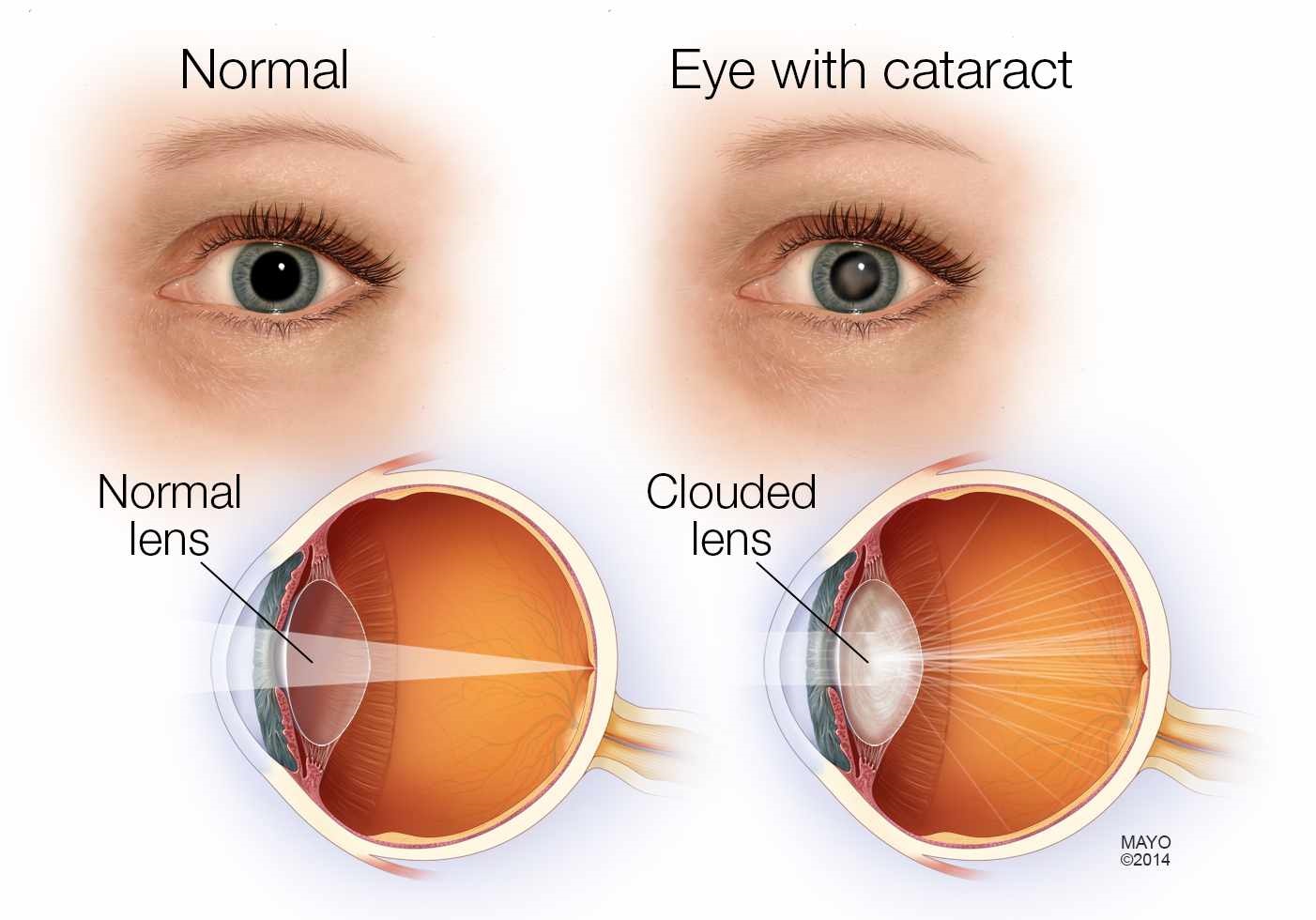The normal crystalline lens of the eye is clear and transparent. Whenever the lens develops cloudiness or opacity, it is called a ‘cataract’. This opacification obstructs light from being transmitted to the retina causing blurring of vision. This may be compared to a window that is frosted or fogged with steam. Removing a cataract is one of the most common and successful operations performed. Our cataract specialists are amongst the most experienced.

Most cataracts occur as a result of:
Increasing age. The normal process of ageing may cause the lens to harden and turn cloudy.
Other less common causes of the development of cataract are:
Treatment for cataract is always by an operation to remove the opaque lens from the eye.
No medicine or drops can remove the cataract or opacity of the lens.
When should one be operated for Cataract?
When a cataract causes enough loss of sight to interfere with the patient’s routine lifestyle, it is time to remove it. Depending on individual needs, the patient and the ophthalmologist decide together when the cataract should be operated. DO NOT WAIT FOR THE CATARACT TO GET MATURE as unnecessary delay can lead to avoidable complications and more difficult surgery. Cataract surgery can be undertaken successfully in any season. Summer season have absolutely no effect on the outcome of the cataract surgery. In short, whenever a patient is visually handicapped to carry on his / her daily activities, it is time to consider cataract surgery.
There are several surgical techniques for cataract removal. Cataract surgery through phacoemulsification is the most modern and advanced method for performing cataract surgery The operating surgeon is the best person to decide which technique is likely to yield the best result. Phacoemulsification through a small incision is the most advanced method and allows safe and predictable surgery. A small instrument called the phaco probe is introduced within the eye. Ultrasonic vibrations generated within the probe break the cataract into multiple small pieces (emulsification), which are then removed using a suction device through the same probe. After removing the cataract, a foldable intraocular lens (IOL) is implanted in the eye through this small incision.